The Top 10 Most Produced Aircraft of WWII
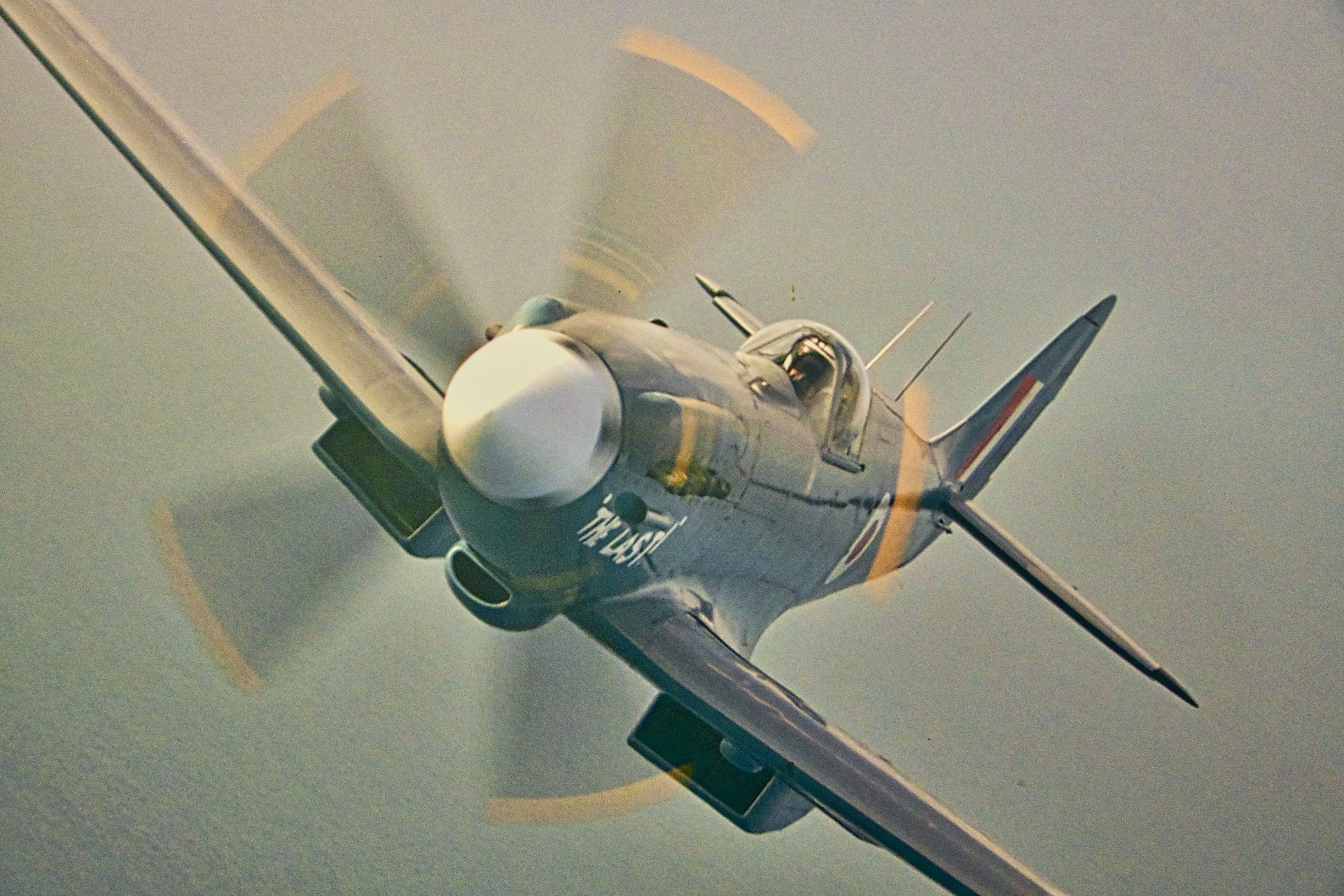
During World War II, manufacturers around the globe partook in history’s greatest production effort, making some of the most produced vehicles in history. Factories went from building automobiles, to building hundreds of bombers per month. At its peak, the Ford Willow Run plant was finishing a B-24 every 60 minutes!
The numbers nations can produce during wartime are staggering. Here is a collection of the 10 most produced aircraft of WWII.
10. Hawker Hurricane – 14,533 Units
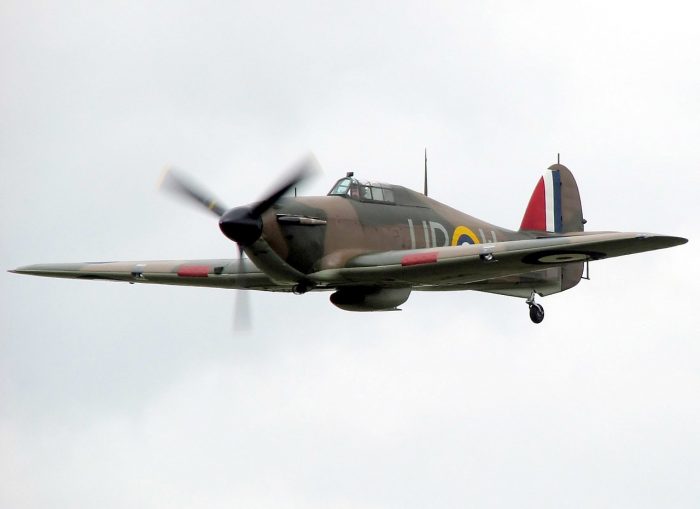
The Hawker Hurricane is regarded as the workhorse of the early years of WWII, and played a huge part in the defence of Britain in the Battle of Britain. In this battle for aerial supremacy the Hurricane actually destroyed more aircraft than the famous Spitfire. First flying in 1935, it was manufactured from 1937 to 1944, and was in service for almost the entire duration of the war.
The Hurricane can fly at a maximum speed of 340 mph, with a range of around 470 miles and a max altitude of 35,000 ft. It is around 31 ft long, 13 ft high and 40 ft across the wings. In the later years of the war the Hurricane struggled to compete with more modern aircraft, so it was resigned mainly to second line roles.
Almost 15,000 Hurricanes were made overall, of which 13 can still fly today, while many non-flyable examples are on display in museums.
9. Junkers Ju-88 – 15,000 Units

The German Ju 88 was a larger multirole aircraft designed in the mid 1930s. It was advanced for the time, offering high speed for a relatively large airframe. The Ju 88 was one of the fastest bombers that saw service in the Second World War, with a top speed of over 300 MPH. It was designed to be able to fly faster than the interceptors of the time.
It became one of the most versatile combat aircraft of the war, being used as a bomber, dive bomber, torpedo bomber and even a night fighter. It flew with the Luftwaffe all through the war.
8. P-51 Mustang – 15,875 Units
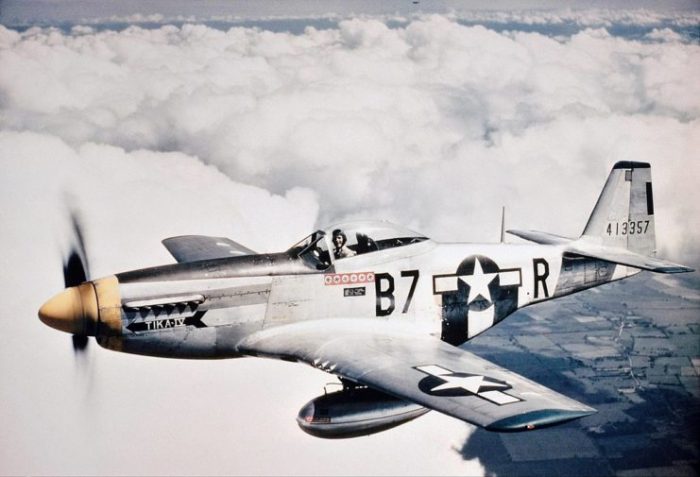
The P-51 Mustang is one of the most iconic warplanes of all time. Designed by North American, it originally featured an Allison V-1710 V12 engine, which while adequate, didn’t make the aircraft particularly special as it suffered from limited performance at higher altitudes. However, after some British tinkering, the Allison was replaced with the Roll-Royce Merlin, a supercharged 27.0 L V12 producing 1,500 hp.
This engine famously transformed the Mustang from a pony to a thoroughbred stallion. The supercharged engine significantly increased its high altitude performance, and allowed it to fight toe to toe with the best German aircraft.
The most famous version was the P-51D. This aircraft used the Packard V-1650-7 engine, a licensed built version of the Merlin engine, and came with 6 .50 caliber AN/M2 machine guns.
The P-51 also had great range, enabling for the first a fighter to travel with bomber formations from England, all the to Berlin and back. This had a great affect on bomber losses, chasing away intercepting Axis fighters.
P-51s were also used as fighter bombers for ground attack, a great sight to allies fighting below.
The P-51 was used in service with Allied air forces in Italian, Mediterranean and North African areas of service and also saw action in the Pacific War against the Japanese. Over the course of World War 2, P-51 pilots claimed to have shot down 4,950 enemy aircraft.
7. P-47 Thunderbolt – 16,231 Units

The P-47 Thunder was one of the largest single engine fighters ever built, and at 9 tons fully loaded, one of the heaviest too. In fact it was so heavy, it outweighed the P-51 and Bf 109 combined.
Nicknamed the ‘Jug’ due to to its milk jug-like silhouette, it was built between 1941 and 1945. It came equipped with eight .50 caliber AN/M2 machine guns; a devastating amount of firepower.
While not the best aircraft upon its arrival to battle, the P-47 would morph into a great aircraft, and would form the backbone of US fighters during the war. It was famous for its incredible ruggedness, often coming home with entire cylinders missing from the engine, or holes in the wings. The cockpit was large and comfortable, with armor plating at the front and back that protected the pilot. Surrounding him was a bubble canopy that provided great visibility.
The Thunderbolt could carry 10 5 inch rockets under the wings, or a single 2,500 lb bomb. Shockingly, its payload was over half that of the B-17 Flying Fortress!
Its durability, payload and well protected pilot meant ground attack came naturally to the P-47. It performed well in the air too, actually beating the P-51s kill tally in the first three months of 1944. The Thunderbolt flew more attack missions than the P-51s, P-40s and P-38s combined.
Not only was the Thunderbolt one of the main fighters for the U.S. in World War II, but also served with the British, French, and Russians.
Today the Thunderbolt name lives on with the Fairchild Republic A-10 Thunderbolt II.
6: Yak-9 – 16,579 Units
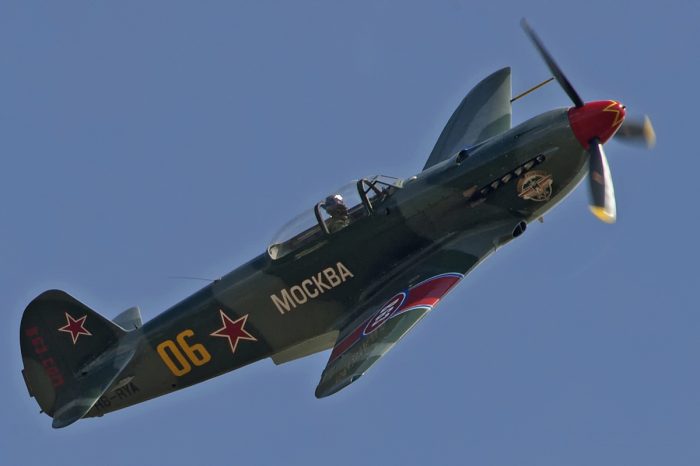
The Soviet Union is often overlooked in terms of air power during the war. However, they produced a huge amounts of aircraft. The Soviets produced the Yak-9 under the harshest conditions, when entire factories were relocated to the Ural mountains, away from German bombers.
The Yakovlev Yak-9 was the USSR’s most produced fighter plane. It was a multi-role aircraft, acting as a interceptor, bomber escort, fighter bomber and fighter. The Yak-9 could use a huge 37 mm or 45 mm cannon that fired through the nose of the aircraft for anti-tank work. Its very light and small airframe assisted in its mass production capabilities, and made it agile enough to dogfight with German Fw 190s or Bf 109s.
5. B-24 Liberator – 18,482 Units
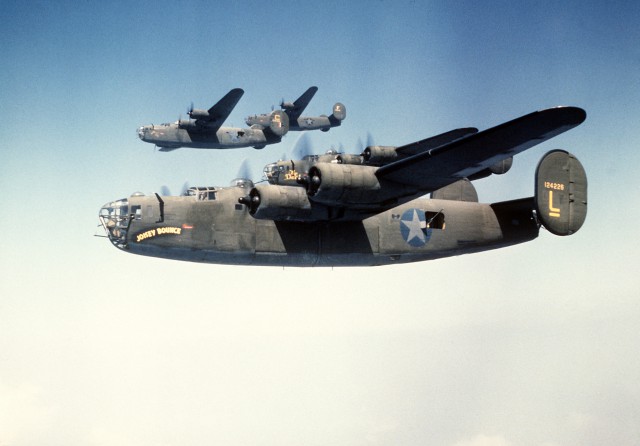
The B-24 was another workhorse for the US during the war, this time for bombers. It was used heavily in all theaters of the war, and assisted in the Battle of the Atlantic where its great range allowed it to spot U-boats in the most remote areas of the Atlantic.
Twelve thousand B-24s saw service with the USAAF, peaking in September 1944 when there was 6,043 active!
It had a modern design featuring a shoulder-mounted “Davis wing,” which gave the Liberator long-range, a high cruise speed, and the ability to carry a heavy bomb load. This wing design was so significant that even with the same engine power and weighing significantly more than the B-17, B-24s could fly faster with a heavier payload.
For defense, the B-24 carried up to 10 .50 caliber Browning machine guns which were located in the waist or in turrets.
Aircrews tended to prefer the B-17 as it was regarded as slicker and more refined, while General Staff favored the B-24.
4. Fw 190 – 20,00o Units

The Focke-Wulf Fw 190 was one of the best fighters of the war. Its introduction in 1941 shocked the Allies, who up until that point were comfortably beating most enemy fighters with the Spitfire.
However the Fw 190 could out-climb, out-dive and out-accelerate the Spitfire Mk V, forcing Allied pilots to use entirely new tactics to defend against them until a proper solution could be produced. The Allies were so desperate to get a hold of a Fw 190 for studies to create a counter, that they nearly proceeded with a commando raid on a French airfield to capture and fly one home.
This eventually proved to be unnecessary when a confused German pilot, Armin Faber, accidentally landed his Fw 190 completely intact at RAF Penbury, an airfield in Wales.
The 190 was highly respected by all Allied pilots as it was a nearly perfect fighter for the time. Oberleutnant Otto Kittel – who was an amazing pilot – scored almost all of his 267 kills in a Fw 190.
The 190 used a BMW 801D-2, a 14-cylinder air-cooled radial piston engine that produced 1,677 hp and up to 1,953 hp when using emergency power. This power combined with its relatively light weight (5 tonnes lighter than the P-47) gave it an exceptional rate of climb. The Fw 190 would not be matched by any Allied fighter until the introduction of the Spitfire Mk IX.
3. Spitfire – 20,315 Units
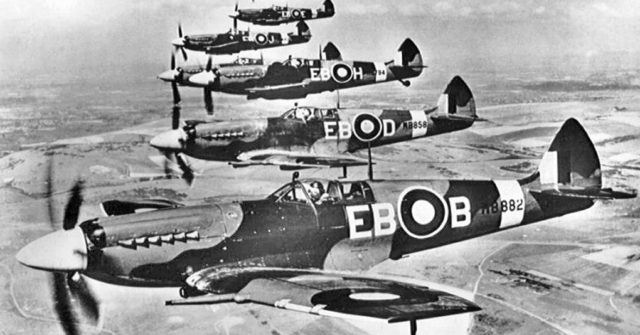
The British Supermarine Spitfire is perhaps the most famous aircraft of all time. Known by adults and children alike, the Spitfire won the hearts of soldiers and civilians when they held off the German onslaught in the air in the Battle of Britain.
The Spitfire’s nemesis in the air was the Bf 109, constantly meeting in battle over the skies of Europe.
First flying in 1936, the Spitfire was a highly advanced design for the time, with its powerful Merlin engine and elliptical wings giving it great agility and rate of climb.
One of the Spitfire’s tickets to success was its upgradability. It started life with a 1,030 horsepower Merlin, which throughout its life was continuously improved to provide well over 1,500 hp. Even later versions used the Rolls-Royce Griffon engine that made over 2,300 hp. Firepower was improved too, starting with 8 .303 machine guns, the Spitfire could eventually carry 4 devastating 20 mm cannons.
The only drawback of the Spitfire were its relatively small fuel tanks, limiting its range throughout the war.
In the Battle of Britain, the Spitfire gained fame by having the highest victory-to-loss ratio among British aircraft. Bob Tuck (27 kills), Johnnie Johnson (34 kills) and Douglas Bader (20 Kills) were the top ace fighters in that battle.
2. Messerschmitt Bf 109 – 34,480 Units
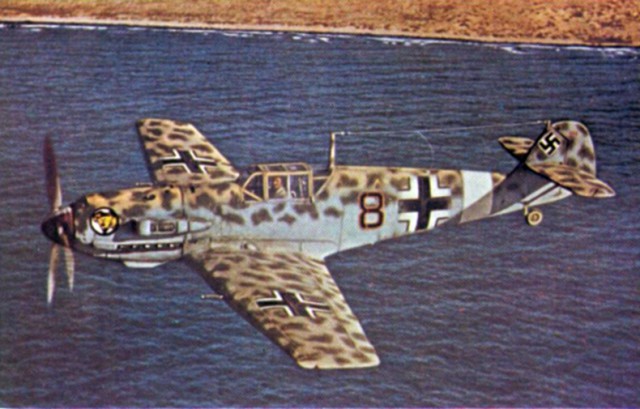
The Bf 109 is the legendary adversary of the Supermarine Spitfire, and an aircraft of similar pedigree. Like the Spitfire, it was designed in the mid 1930s, and flew just 1 year earlier than its British counterpart. Also like the Spitfire, the Bf 109 was continuously improved throughout the war, become a massively more capable aircraft by the wars end, that could still match the latest Allied aircraft.
The Bf 109 was made in huge numbers, and made up almost 50% of Germany’s aircraft output during the war.
It was a very small plane, weighing just 2.4 tons unloaded, but had a powerful 1,500 hp inverted DB 605A-1 V12 engine, giving it a superb power to weight ratio. In the 1930s it set many speed records.
Its small size led to it being as graceful in the air as a dancer, able to match evenly with the Spitfire. Its fuel injected engine gave it an advantage in harsh manoeuvres over the Spitfire’s early carburetted engine that could be starved of fuel by g-forces. At high altitudes it was more agile than many Allied aircraft.
It carried 20mm cannons, and it would be the most important fighter plane in the Luftwaffe.
It was first used in the Spanish Civil war and stayed in use until the dawn of the jet age near the end of World War II, where it was still the backbone of the Luftwaffe’s Fighter Force. However slowly but surely it was replaced by the Focke-Wulf Fw 190 over the course of the war.
The original plan for the 109 was for it to be an interceptor, but later models were built for a variety of tasks; fighter-bomber, day-fighter, night-fighter, all-weather fighter, recon plane, ground-attack aircraft and of course a bomber escort.
The Bf 109 is not only one of the most produced WWII aircraft, but also the 3rd most produced aircraft in history, of all types.
1. Ilyushin Il-2 – 36,183 Units
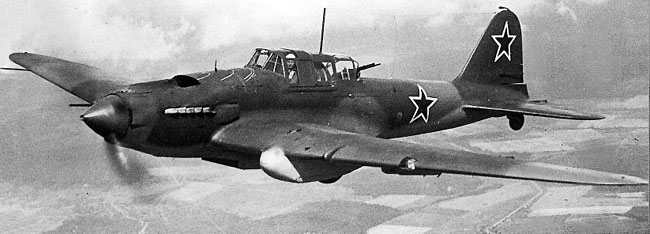
When needed, Russia has a manufacturing might like no other nation on Earth. They hold the number one spot for the most produced firearm ever with the Ak-47, the most produced tank in history with the T-54/55, and second most produced tank with the WWII T-34.
When it comes to aircraft, the Russians are no different. The Soviet Ilyushin Il-2 Sturmovik is the number one aircraft on this list, and goes down as the most produced military aircraft ever. It is the 2nd most produced aircraft in history, of all types.
The Il-2 was designed in 1940, with production starting early in 1941, but when Germany invaded there were only 249 available.
After the German Invasion of the Soviet Union with Operation Barbarossa, the Soviets put into effect a mass-retreat of civilians and industry eastward. Around 16,000,000 civilians evacuated during this time, plus well over 1,500 large factories.
Once rebuilt and settled, Soviet production slammed into gear, pumping out more equipment than any other nation ever had before. Part of this output was the Il-2, which became “as essential to the Red Army as air and bread”, as Stalin put it.
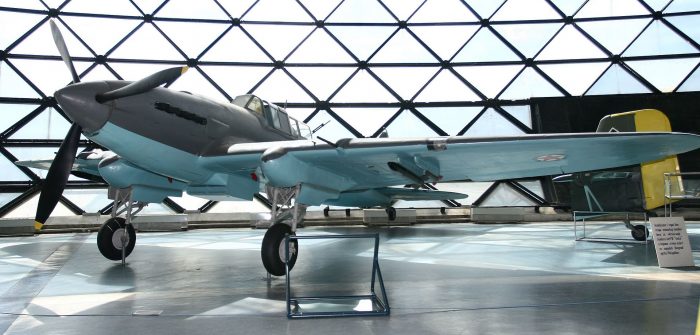
The Il-2 is held in high regard in Russia, and is a symbol of national pride for the victory over Germany. However post war analysis of records shows, like other aircraft from the Allies, its ground attack effectiveness may not have been as great as previously thought.
The IL-2 could survive a massive amount of damage and still return to base due to having armor plating incorporated into the frame of the aircraft as load bearing areas. This armored ‘tub’ surrounded the pilot and protected him from most small arms fire. The rear gunner did not have this protection unfortunately, resulting in a much higher death rate than the pilots.
The Il-2 did provide a significant morale boost for Soviet troops below, and the opposite for German troops. The ground forces they were supporting would often call for more strafing runs even from aircraft that had run out of ammo, just for the tactical effect of making the enemy run for cover.
Another Article From Us: 19 Awesome Images of WWII Warbirds Cutting the Grass
Overall the Il-2 would go from a total of just 250 at the time of the German invasion in 1941, to the 2nd most produced aircraft in history. It was in 1st place for decades, only being over taken by the Cessna 172 in the 2000s.
